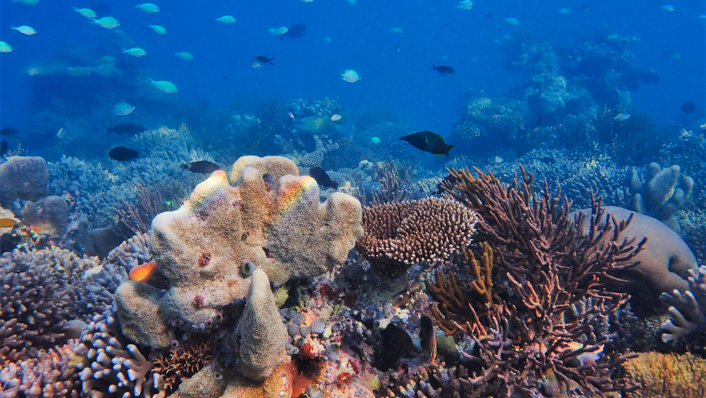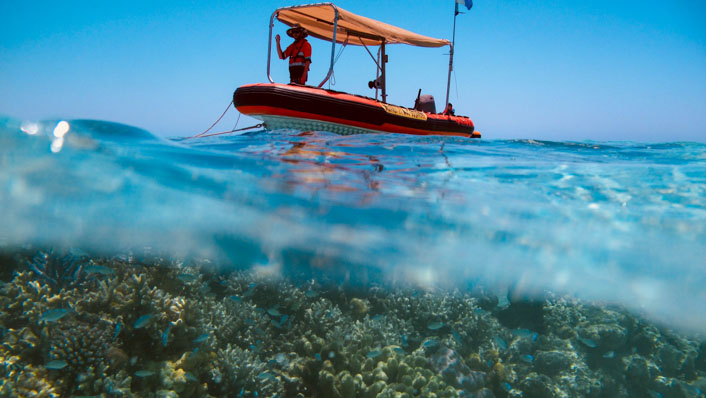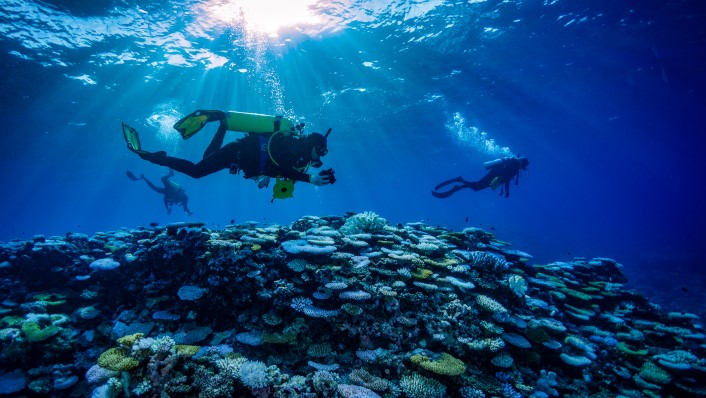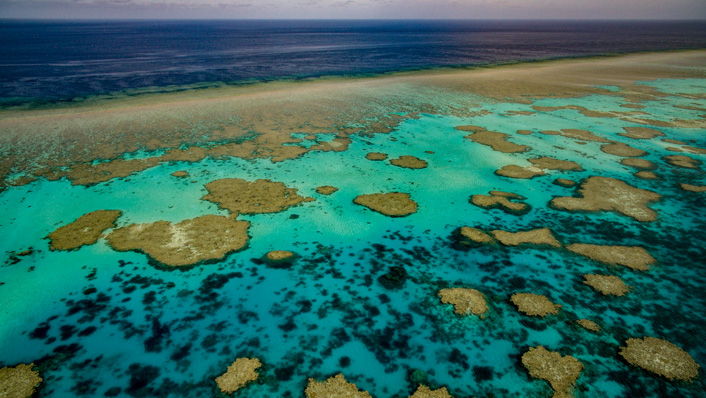Hundreds of kilometres from Western Australia's Kimberley coast lies isolated and unique oceanic reefs. Rising steeply from the ocean floor, these reef systems are home to beautiful, diverse coral systems which teem with life.
The wonder they harbour in marine life is countered by the challenge they pose to science teams to study and monitor them, an increasingly important consideration as climate change warms oceans and brings disturbance events like bleaching to these reefs with increasing regularity.

It's a challenge AIMS scientists have undertaken since 1996, and one they are embarking on right now. A team of 10 AIMS scientists, led by Dr James Gilmour, is venturing out again on board AIMS Research Vessel Solander to monitor how Ashmore Reef, the Scott Reefs and Mermaid Reef in the Rowley Shoals are faring following an uncertain summer.
"Getting out to these reefs is a huge undertaking. Ashmore is located closer to Indonesia than to Australia and will take us two days to steam to from Darwin," said Dr Gilmour.
"But it will be worth it. These reefs are rich marine environments with unique genetic diversity. Because of their isolation, these reefs experience relatively few local pressures affecting others around the world, although they are increasingly affected by traditional and illegal fishing. However, their biggest threat is biodiversity loss through climatic disturbances, so it is important we keep monitoring and assessing their capacity to recover or adapt to ocean heating."
As Australia's tropical marine research agency, AIMS scientists work with management partners to monitor a variety of reefs in Western Australian (WA) waters.

These diverse reefs, along with others in WA waters, have faced differing heating and cooling conditions over the summer driven by climate change, as well as the El Nino and positive Indian Ocean Dipole weather events, and periodic storms and cyclones.
"Until now, our scientists have been monitoring conditions over the region remotely using sea surface temperature data from satellites as well as oceanographic modelling. But it is now time to get in the water and see exactly what is happening below the surface," said Dr Gilmour.
"Our team of coral scientists, geneticists, oceanographers, and fish ecologists will be at sea for three weeks conducting bleaching and long-term monitoring surveys at each of the reefs.
"For Ashmore, this is the first time we have visited since 2017, while for Scott, this is our first monitoring trip since 2021."

Dr Gilmour said satellite data showed heat had been building over these two northern oceanic reefs earlier this summer, but that reprieves in the form of storm and tropical cyclone activities had since lowered the risk of bleaching.
"Corals there probably bleached following the earlier heat accumulation so we may document some recent impacts on these reefs. But due to the cooling, any bleaching in autumn is less likely to be severe or widespread. Conditions with heating can rapidly change so the outcome is not certain, although I'm more hopeful than I was a few months ago," he added.
"There has been consistent although not severe heat stress at these reefs most years since 2020, so it is important we keep collecting data and building our understanding of their responses."
In addition to these bleaching surveys, at Ashmore Reef, the team will also be deploying oceanographic instruments and conducting surveys to learn more about the structure, resilience and function of this reef.
These activities will contribute to a project with managing entity Parks Australia called Building Resilience in Australia's Iconic Offshore Reefs, which began last year and supports the Ocean Discovery and Restoration program.
The project aims to build knowledge of current coral resilience in Ashmore and Mermaid Reefs and will contribute to the development of a framework to guide management decisions, including novel interventions. Ultimately this knowledge can be applied to help with the management of other oceanic reefs across Australia's marine park network.
The second reef AIMS will be visiting is the Scott Reefs - Australia's largest oceanic reef system.

AIMS has been monitoring this isolated oceanic atoll for almost 30 years. Despite its isolation and limited supply of new coral larvae from surrounding reefs, the Scott Reefs remain reasonably resilient because of good water quality and fish stocks that help with coral survival and growth following disturbances.
The Scott Reefs were hit by severe bleaching events in 1998 and 2016, and additional heat stress in 2017, 2019 and 2020. These events, along with cyclones, have resulted in reductions in coral cover, followed by periods of recovery.
The final stop on the trip will be to Mermaid Reef in the Rowley Shoals.
Dr Gilmour said accumulated heat stress had not been as much of an issue this summer for a system known for its healthy and resilient coral reef habitat. The Shoals have not experienced any major coral bleaching events, although patchy bleaching has become more common in recent years.
The results of the surveys conducted in the coming weeks will be published when the data has been assessed.
Feature photo: James Gilmour






